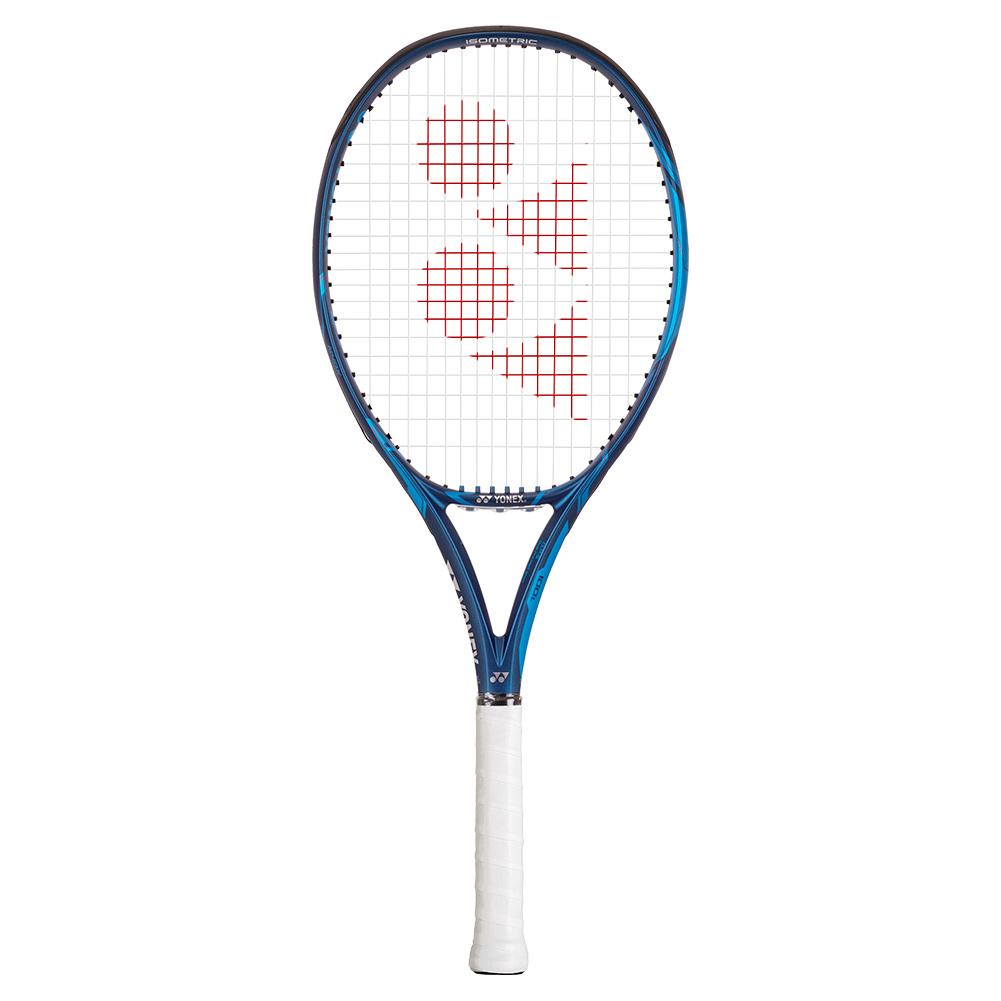Racquet Specs |
|

Intro
Yonex Ezone fans who want all the performance of the line in a lighter setup can rest easy as Yonex introduces the newly updated 100L. This lighter version of the Ezone 100 boasts all of the same technology improvements. Yonex expands its usage of Vibration Dampening Mesh (VDM) by lining the handle of the 100L with it for better dampening without impacting the feel. A new graphite called M40X is used in the throat to promote better flexibility without altering the stability the Ezone line is known for. For more uniform responsiveness and lower string bed friction, Yonex brings back Liner Tech grommets from the outgoing model. I was able to take the 100L for a test drive recently to see how this new update would perform.
Groundstrokes
Much like the heavier 100, the 100L had plenty of power on tap off the ground. With its 23.6/26/22 mm beam and firm construction, I found it easy to tap into the racquet’s power from the baseline. At 10.6 oz strung, it was easy to generate racquet head speed on groundstrokes although I missed the court penetration of the heavier Ezones. The slightly headlight balance made it easy for me to whip the 100L around and hit impressive cross court angles. The reduced mass of the racquet made it feel a little less precise than the heavier versions. I found myself picking a bit larger targets to keep from over hitting and taking myself out of points. As with other Ezones, spin was readily available. The 16 x 19 pattern offered plenty of rotation, but I appreciated the denser middle of the pattern and the fact that it offered me solid control over the spin I was producing. While not as adept at flattening balls out as the 100 and 98, the 100L still did an impressive job of controlling mid court balls and letting me attack. For its weight, the 100L had solid stability but I did feel it buckling under the pressure of some of my bigger hitting partners. More advanced players would definitely want to enhance the stability with some additional weight. The 100L was a blast to hit with on the run. The fast swing speeds made it smile inducing anytime I lined up a running passing shot past my opponent.
Volleys & Serves
At net, the Ezone 100L utilized its speed to positive effect. The high degree of power and speed allowed me to put away anything left high and in prime position for me to pounce on. The reduced weight had a higher tendency to float balls more than intended if I wasn’t focused on driving through the ball. I had no problem getting frame into position thanks to its quick reflexes and easy positioning. The 100L was not as accurate or precise as the regular 100. The extra float it tended to put on balls made it more challenging to volley to aggressive targets. The 100L did have solid touch for delicate volleys, but I wanted more mass to better bleed pace off the ball. I felt the 100L was best suited to highly aggressive, attacking volleys as opposed to more delicate attempts to carve opponents up.
Speed was also the name of the game on serve with the 100L. I was able to generate plenty of racquet head speed and put some serious heat behind flat first serves. They did not feel as heavy or penetrating as the ones coming off the higher mass frames, but there was still plenty of pace to cause problems. Accuracy was solid for its class but the 100L wasn’t designed to be a spot serving machine. I mixed up locations and was able to hit big targets; I just didn’t feel confident that I could paint the lines or T with a serve if I really needed to. Kick serves were my most effective option on second serve. The high racquet head speed and easy spin made my ball jump off the court and get up high in a hurry. The lower mass of the frame reduced the amount of bite my slice serve had so I mainly focused on using the high bouncing kick to keep people from attacking my second serve.
Feel & Comfort
Yonex had clearly made improving the feel a focus of this generation of Ezone. The harshly stiff upper hoop of the previous model has largely gone away, replace by the 100L’s much more consistent feeling and responding hoop. This model didn’t feel as inherently stable or smooth as models with more weight, but it will suit a developing player or junior very well. Much like the other Ezone models, the 100L was comfortable and a marked improvement over the outgoing version. The VDM handle absorbed vibration effectively and the extra throat flex from M40X gave a bit more of that softer, pocketing feel. Players with arm sensitivities should be able to play the 100L with a variety of string types and tensions with minimal risk of issue.
Overall
The Ezone line is one of Yonex most diverse performers. The 100L effectively blends power, spin and feel into a lightning fast package. It offers enough control to play effectively from all areas of the court and it effective when on the attack. Juniors and developing players looking for something with best in class stability and an outstanding blend of power and response should look closely at the Yonex Ezone 100L.
About the Reviewer: Matt Locke formerly served for 3 years as the Junior Programs & Development Coordinator for USTA-Idaho. He is a PTR certified coach and is an active USTA 4.5 League and Tournament player.




